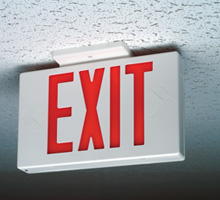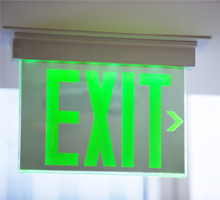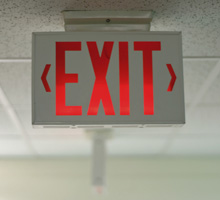Interior Emergency Lighting Guide
Storms, natural disasters, fire, and other unexpected events can cause widespread and prolonged power outages. When your building or facility goes dark, having emergency lighting is the best way to help protect everyone living, visiting, and working on your property. Take the necessary lighting precautions now, and you'll be ready whenever electrical power is lost.



Prepare Lighting for Emergency Situations
You never know when an emergency will strike; be prepared with proper lighting, equipment, and supplies.
Make Sure Exit Signs Work Properly
During an emergency evacuation, quickly locating the nearest exit is crucial for the safety of everyone in the building. OSHA requirement 1910.37(b)(2) states, "each exit must be clearly visible and marked by a sign reading Exit."
Make sure all exit signs are in good working condition and easy to see. As part of your routine building maintenance:
- Ensure exit signs are posted at every exit route
- Inspect exit signs and replace ones that don't light properly
- Regularly test all emergency lighting systems, as required by code
- Remove obstacles that block exits and stairways
- Perform quarterly evacuation drills
Install Emergency Floodlights
Darkness and danger can happen in an instant. Emergency light fixtures inside a hallway, stairway, or emergency exit routes can immediately illuminate dark areas and help restore calm when power is lost. According to the NFPA 101 Life Safety Code®, emergency light fixtures must automatically come on within 10 seconds of an electrical power outage and stay lit for at least 90 minutes.
Stock Up on Flashlights & Glow Sticks
Show residents, guests, and employees you care about their safety when the lights go out. Provide inexpensive flashlights or glow sticks for instant lighting, and remember to have plenty of batteries available as well.
